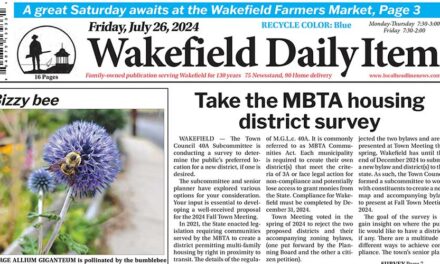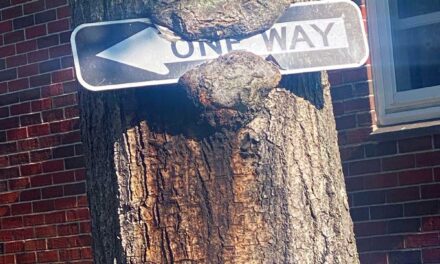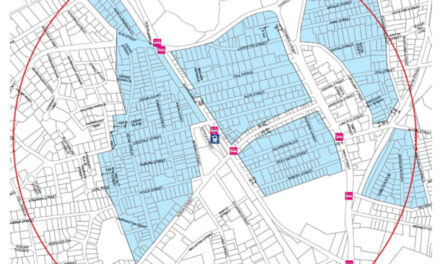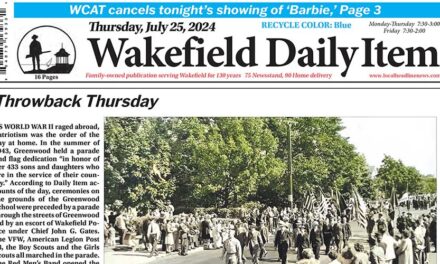Published in the November 24, 2015 edition
By MARK SARDELLA
WAKEFIELD — The average residential property tax bill will be going up $333 this year after the Board of Selectmen once again shifted as much of the tax burden as allowable onto the commercial/industrial class of properties. The vote came at the annual tax classification hearing last night.
Director of Assessments Victor Santaniello said that for the average single-family home in Wakefield, valued at $440,400, the total FY 2016 tax bill will be $5,941, a 5.93 percent increase over last year.
The average single-family home value in Wakefield went up from $416,000 last year, Santaniello said. The tax rate per $1,000 of valuation went up by $0.01 over last year’s rate of $13.48, he noted. The board’s decision means that the new residential property tax rate will be $13.49 per $1,000 of valuation.
“Historically, Wakefield has chosen the maximum allowable shift factor to afford residential taxpayers the lowest share of the tax burden allowed by state law,” Santaniello said during his presentation to the board.
The selectmen showed little inclination to break with that historical pattern last night.
The commercial/industrial property (CIP) tax rate will be $27.03, down $0.19 from last year. For the average commercial property (valued at $1,176,700) the FY 2016 tax bill will be $31,806, a 2.95 percent decrease from last year’s average commercial tax bill.
Santaniello stressed that the numbers can change slightly during the Massachusetts Department of Revenue approval process.
He noted that FY 2016 represents the second year that the full Debt Exclusion for the Galvin Middle School is reflected in local property tax bills. The Debt exclusion adds $2,418,026 to the town’s total FY 2016 tax levy, Santaniello said. That translates to $0.44 on the average residential tax rate, or $194 on the average single family home tax bill. The Galvin accounts for $0.87 on the CIP rate or $1,1023 on the average commercial tax bill.
Santaniello also noted that the Board of Selectmen had requested an excess levy capacity amount of $305,000 for FY 2016. This means that the board decided not to increase the tax levy by the full amount allowable under Proposition 2½.
According to Santaniello, that decision by the selectmen results in a savings of $0.07 on the residential tax rate and $0.14 on the CIP rate. That translates to a $31 average savings for the residential taxpayer and a $164 savings for the average property in the CIP class.
Santaniello pointed out that of the communities contiguous to Wakefield, Saugus had the lowest average single-family tax bill at $3,971. Stoneham and Melrose had slightly lower average single-family tax bills than Wakefield, at $5,411 and $5,549 respectively. Lynnfield ($8,021) and Reading ($6,824) had higher average single family home tax bills.
Santaniello did note, however, that of the six communities Wakefield residential properties realize the lowest possible share of the tax burden, with exception of Saugus, which has the Route 1 business district.
Since 2006, he noted, the average annual single-family tax bill increase in Wakefield has been 4.79 percent.
Selectman Paul DiNocco acknowledged that the town has consistently opted for the maximum shift in order to give residential property owners the lowest possible share of the tax burden. But he said that at some point he would like to see the board consider giving businesses a tax break too.
Selectman Betsy Sheeran said that she would always support the maximum shift in favor of residential taxpayers because they are asked to pay for things like the Galvin Middle School.
Selectman Patrick Glynn agreed with Sheeran, noting that there were other ways to provide tax incentives for businesses.
The selectmen also voted last night not to offer an open space discount after Santaniello explained that no properties have been identified in Wakefield that fulfill the legal requirements for such a discount.
In addition, the board opted not to offer a residential exemption. Santaniello explained that only a handful of communities in Massachusetts offer such an exemption, including Boston, Cambridge, Chelsea and Brookline. The exemption is aimed at encouraging owner-occupied properties, he said, noting that in Wakefield most homes are owner-occupied. He said that about 24 percent of the homes would end up shouldering the burden of this exemption for other properties.
The board also voted against offering a small commercial exemption. Santaniello reviewed the stringent requirements for this exemption and said that the Assessing Department was unaware of any properties in town that meet those requirements.




